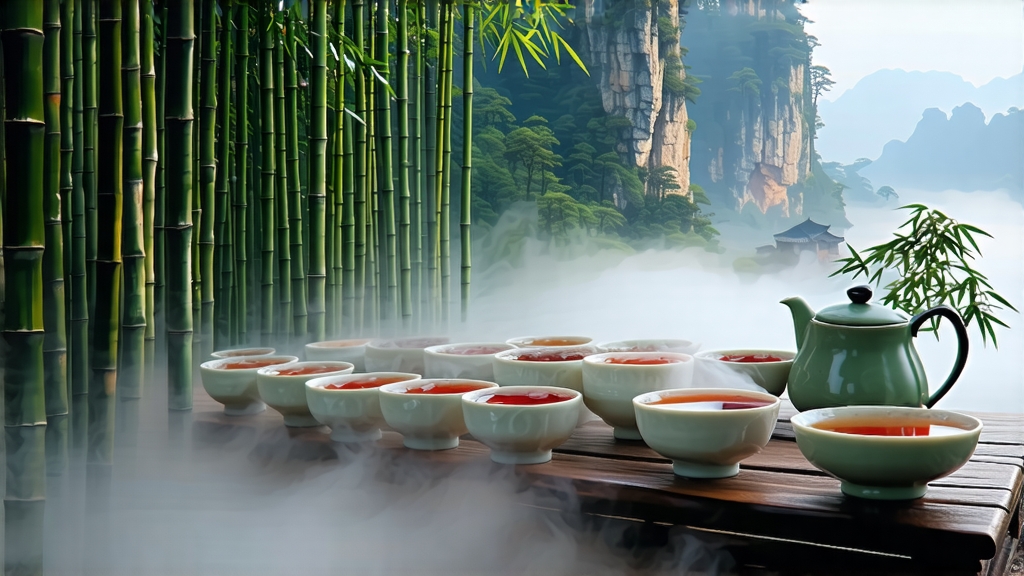
Ask most tea lovers to name China’s oldest black tea and they will pause; name Lapsang Souchong and their eyes widen with the romance of camp-fires in distant mountains. Born in the Wuyi range of northern Fujian around 1568, this “Zheng Shan Xiao Zhong” is the progenitor of every black tea on earth, yet it remains a reclusive classic, often misunderstood outside its homeland. This article invites the international drinker to walk the stone-paved tea paths of Xingcun village, to taste history curled inside a glossy strip of leaf, and to master the gentle art of coaxing its smouldering soul into a cup.
-
Historical backdrop
The Ming dynasty court had just shifted from compressed tea to loose-leaf when a passing army bivouacked amid the tea gardens of Tongmu Guan. Farmers, anxious that their fresh leaves would wither before they could be processed, rushed the withering over local pine fires. The resulting smoky, copper-coloured tea astonished the next merchant caravan and, within decades, Dutch traders were shipping “bohea” (the Fujianese pronunciation of “Wuyi”) to Europe, where it became the base of English Breakfast blends and the favourite of Catherine of Braganza. Thus a wartime accident created the first fully oxidised tea and the word “black tea” entered the Western lexicon. -
Micro-terroir: why only Tongmu Guan can claim the name
Chinese law protects “Zheng Shan Xiao Zhong” as a product of origin; the demarcated zone covers barely 600 hectares of steep, mist-laden valleys at 600–1 200 m where the Min River cuts through granite cliffs. Humidity hovers at 85 %, temperature swings 10 °C between day and night, and the soil is a friable, slightly acidic laterite laced with quartz. Indigenous vegetable gardens interplant tea bushes with Masson pine and cedar; their resinous exhalations season the air year-round, pre-infusing the leaf with terpenes long before the smoking stage. -
Cultivars: three bushes, three voices
Although any local cultivar can be used, three dominate. Cai Cha (“vegetable tea”), a seed-propagated landrace, gives the classic light, pine-kissed cup. Mi Xian, a mutant with extra methyl anthranilate, contributes grape-like top notes that soften smoke. Bei Dou, a clonal offspring of the legendary Da Hong Pao mother bush, adds cocoa depth and mineral backbone. Blending these in varying ratios is the guarded secret of each Tongmu family. -
Craft: turning green into midnight gold
Plucking occurs only between Qingming and Grain Rain, two leaves and a bud before 10 a.m. The leaves are laid 3 cm deep on bamboo trays inside dimly lit upper floors of wooden houses; withering lasts 8–10 h while pine logs smoulder below, raising the ambient temperature to 30 °C and bathing the leaf in cool smoke. Rolling follows the ancient “pine pole” method: a 2 m bamboo pole is rocked across 5 kg of withered leaf inside a rattan tray, bruising cells without macerating them. Oxidation proceeds in wooden tubs covered with wet cloths; every 20 min the tea master lifts a handful to the oil lamp, judging the shift from jade to copper to chocolate. The critical smoking uses only 40-year-old Masson pine heartwood, split to finger size and burned without flame; fresh tea is spread on sieves 1.5 m above the fire for 2–3 min, rested, then smoked again up to eight cycles. A final charcoal bake at 70 °C for 2 h fixes the aroma and reduces moisture to 4 %. The entire process consumes 20 h and demands that the craftsman stay awake, feeding the fire with the rhythm of a Zen monk striking a bell. -
Grades: from subtle to smouldering
Traditional Zheng Shan is unsmoked or lightly smoked (song xiang), presenting dried longan and honey notes. Export-grade Lapsang, invented for 19th-century Russian caravans, is heavily smoked, yielding a tarry, almost medicinal punch. Between these poles lie semi-smoked versions scented with cinnamon or longan charcoal. A new “craft’” movement ages the finished tea in